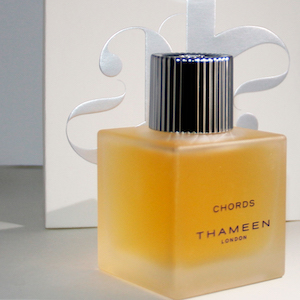Permanent, Impermanence
By Jo Phillips
What’s Missing from the Picture?
The empty spaces above carry the sense that something is missing from within them. Indeed, we detect a feeling of déjà vu, the sense of having been here once before in the spaces, of parks, plinths, stands, steps. A familiarity tapped into a vague memory or distant outline of something on the tip of your tongue?
Our memory creates ghosts for our spaces. Ghosts of moments, of acts, of smells, of events, of objects, of people. The nook of your childhood room window where you would sit and cry. The exact concrete step where you fell and cracked open your chin. The school classroom doorway you would pass through and be greeted by an overwhelming mixture of powdered musk, cigarettes, and coffee. The place of a first kiss… all of these are ghostly reminders of what once was.
So, what is missing from the pictures above? Re-tracing through history, time, and collective memory. A bitty, filo-fax reel of such random acts, events, objects and moments unwinds, and as from the surreal sequencing of a dream, an inside-out house takes shape, a gargantuan blue cockerel stands menacing, a crack begins to make its way catalytically along the turbine hall, icemen sit melancholy heads lolling forward, an apple stands in thin air, John Lennon takes a bite.
What now seems like the stuff of dreams is, in fact, artworks seared into public memory. And the clear stand, steps, empty park, museum hall, and plinth are all pedestals for them. These installations, though temporary, all have left their permanent mark. Unforgettable, placing themselves forever in these spaces; hooks for collective memory.
Rachel Whiteread, House 1993

On the first hook, an empty garden in Bow, London Rachel Whiteread hangs her 1993 House. This is most likely the most recognisable as it not only made her the first female artist to be awarded the Turner Prize in 1993 but also was cause for a real culture war in London. It was the life-sized cast of the entire inside of a condemned terraced house in Bow. The original house was demolished alongside its neighbours to make way for new developments, but Rachel Whiteread’s inside-out house remained.
It became a reminder of the absence of these houses, giving tangible structure to the negative space that they had left behind. Formidable and gritty in appearance, it made visible the outlines of windows, doors, panelling, and flooring. Conjuring a ghostly memory of the house and home from which it came, becoming an emotional telling of the story of Thatcher’s redevelopment in London. Unfortunately, the sculpture caused a split reaction, seen in a public debate with Tower Hamlets London borough council over whether or not to let the work remain. The council won the right to demolish the house in January 1994, but Rachel Whiteread left her indelible mark and impact on the public, who through stories and memory have kept this artwork forever alive in the heart of East London.
Haunting structures, Rachel Whiteread’s work made visible what is invisible.
Katharina Fritsch, Hahn/Cock, 2013

The next hook, Trafalgar Square’s 4th plinth carries Katharina Fritsch’s Hahn/Cock; the sculpture of an immense blue cockerel. Having always played with reality and apparition, with the familiar and the surreal, Fritsch uses colour, image, and size to conjure humour and a sense of the uncanny in her 2013 sculpture. Of course, as the title suggests, talk of the big blue fibreglass ‘cock’, certainly was cause for an image Londoners were unlikely to forget. Not only this, but it was heavily criticised for its connotations of France. Placed in a square dedicated to the Battle of Trafalgar, its bright blue ‘gaulois’ colour was seen as disrespectful. But Fritsch claims to have never thought of this French side to her sculpture, rather, she was interested in posturing the masculine.
This was a feminist work: “I, a woman, am depicting something male. Historically it has always been the other way around. Now we are changing the roles. And a lot of men are enjoying that” says Katharina Fritsch. The artist noted the incredibly masculine environment for her commissioned artwork; the principally male sculptures of Trafalgar Square and the 4th plinth itself. A symbol of male erection, “it’s about male posing, about showing power, about showing… erections! I mean, look at that column!” said Fritsch. Traced in meaning, the artist wanted to bring attention and humour to our masculine structures, environment, and norms. Using the image of a cockerel to question biological determinism, the bright blue to bring attention to the lack of colour in the square, and size to make the whole artwork almost eerie and surreal. This whimsical “big, blue… bird” both questioned history, and it is seared into history because of it.
Nele Azevedo, Minimum Monument Project

The third hook, a series of unassuming steps carries Nele Azevedo’s Melting Men. Miniscule ice sculptures of forlorn men sit posed on the steps of Chamberlain Square in Birmingham, U.K. The ghostly translucent figures slowly disappear, creating small puddles where they once sat. A melancholy sense hangs in the air. Watching this dissolution, we remember those who have dissolved from our lives.
The Minimum Monument Project is a series of emotional and politically charged installations of these icemen, carried out across a series of countries. Looking at the idea of the monument in our modern world. Set in grand squares, across monuments in Brazil, Cuba, Japan, France, Germany, Portugal, the U.K, and Italy. The anonymous, transient, and miniature men put the monumental into question. Azevedo uses these disappearing ice sculptures as the anti-monument. Celebrating the political strength of the small and the shared experience of watching these figures melt, making it all the stronger.
Recognising the permanent pedestals we give to our ‘greats’, her disappearing work makes visible the invisible, those who have been forgotten, as well as this forgetting.
Apple, Yoko Ono, 1966

The fourth hook, a plexiglass stand holds a perfectly green apple. Yoko Ono, known for her influential part in the Fluxus movement in art; a movement that looked to deglamorise any status a piece of art or artist held. She showcased an apple as artwork in the Unfinished Paintings and Objects By Yoko Ono exhibition at the Indica Gallery, London, in 1966.
It was what it appeared to be: an apple, that slowly decayed with the passing of time, placed on top of a clear stand with a brass sign titling the work: “APPLE”.
In a humorous play on the contemporary art scene, representation, and symbolism. Yoko Ono played with what art could be, she made visible an everyday domestic object and got people to think about it. She made visible something invisible to the institutions of the art world.
Its impermanent state contrasted with the permanent position it held on its stand, and its labelled brass plaque:
“There is the excitement of watching the apple decay, and the decision as to whether to replace it or just thinking of the beauty of the apple after it’s gone”
-said Yoko Ono.
Folklore surrounds this apple, as the story goes that this apple was cause for the first meeting between Ono and John Lennon. The artist described meeting John Lennon for the first time when he came to the exhibition, took one look at her piece, then took a big bite out of it. Yoko Ono was naturally upset, but also describes it as being a moment that made her take a step back and laugh. Lennon seemed to have got her and her work instantly. She deglamorised the status art held, he took this and he took this and went with it.
Shibboleth, 2007, Doris Salcedo





